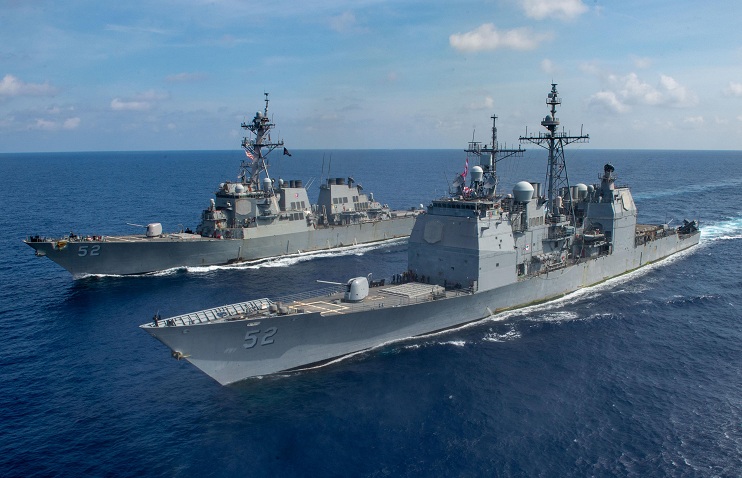The USA has kept its pacific game oiled in the Asia-Pacific region (especially in the South- China Sea) to counter Chinese influence on the South China Sea and the SLOCs in the Asia- Pacific. As a show of its reach in the Asia-Pacific region, US has announced the return of USS Barry, a guided-missile destroyer, to the South China Sea to carry out security missions, sparking fears of an open conflict in the disputed waters. This comes within a week of China claiming that its missile had hit a ship near Paracel Islands. It must be underlined that the Parcel island, Pratas Island, Vereker Banks, Macclesfield Bank, Scarborough Shoal and Spratly Islands are under disputed claims by multiple countries in the South- China Sea conflict.
The re-introduction of the Arleigh Burke-class vessel was unveiled on the US Pacific Fleet’s official website. According to the statement, the USS Barry will help “promote peace and stability” in the territory. The Commanding officer of USS Barry, Cmdr Chris Gahl stated that a continued presence in the South China Sea is vital in maintaining a free and open Indo-Pacific. He further added that Barry’s transit of the Taiwan Strait ensures the right and instills the confidence of all nations to trade and communicate in the South China Sea.
US Navy guided-missile destroyers in the Destroyer Squadron 15, the largest of its kind, have constantly stayed in the territory. This month marks the fifth time of the 2020 deployment that Barry has carried out as part of routine missions in the region.
Lt Cmdr Timothy Baker, Barry’s plans and tactics officer said: “This past April, Barry conducted a Freedom of Navigation (FON) operation around the Paracel Islands and then rendezvoused with the USS America expeditionary strike group for operations in the South China Sea.”
On the other hand, China on Monday had slammed Washington on its withdrawal from the Open Skies Treaty with Russia, stating that this move would undermine the military trust and transparency, endangering future attempts at arms control. Surprisingly, China had declared a no-fly zone in international airspace above the Bohai Sea. China, many have observed, has a strong relation with its vast northern neighbour-Russia, which has been evinced by the sale of Su35 jets and S-400 missile defence system and more importantly the USD 400 billion Gazprom Gas deal. Interestingly, the treaty to which China is not a signatory allows each country overflight rights to inspect military facilities. As a result, the New Start treaty remains as the only treaty between the cold war foes.
China has urged both the countries to engage in dialogue regarding limitations of nuclear arms, which observers state, allows China to develop silently its own arsenal of intermediate-range missiles as a mark of regional military hegemony signaled by moves like the skirmish in Galwan. It remains to be seen how US-China power rivalry pans out, in the presence of a seemingly neutral Russia after Biden takes over as the president.
The author is a student member of Amity Centre of Happiness
Editor Opinion, Biswarup Mukhopadhyay has given important inputs for the article.





